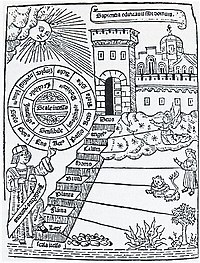
Photo from wikipedia
Abstract As an essential feature of social groups, social hierarchies influence how people interact in daily life. However, it is unknown how external evaluations from peers at different levels in… Click to show full abstract
Abstract As an essential feature of social groups, social hierarchies influence how people interact in daily life. However, it is unknown how external evaluations from peers at different levels in a social hierarchy influence feedback processing. In the current study, participants were instructed to establish a social hierarchy through a novel stick drawing task. With their status in the social hierarchy manipulated to be in the middle, participants received positive or negative evaluations from superiors and inferiors separately with ERPs signals recorded. Behaviorally, participants rated their happiness highest, and most quickly, after receiving positive evaluations from superiors. ERP results showed that P3 amplitude exhibited an interaction between social hierarchy and feedback valence, such that larger P3 amplitude was elicited by positive evaluations from superiors than any other condition, whereas the feedback-related negativity was only sensitive to the difference between high and low social statuses. Moreover, a generalized linear mixed model examining single-trial ERP data showed P3 amplitude correlated with happiness ratings as a function of feedback valence: a significant positive correlation in the positive feedback condition and a significant negative correlation in the negative feedback condition. P3 was also negatively correlated with RT across all conditions. These results demonstrate that brain activity associated with feedback processing predicted participants' emotion ratings and their decision time. Our study provides the first ERP evidence that positive feedback from superiors impacts neural activity related to reward processing differently than positive feedback from those of lower social standing.
Journal Title: Journal of Cognitive Neuroscience
Year Published: 2022
Link to full text (if available)
Share on Social Media: Sign Up to like & get
recommendations!